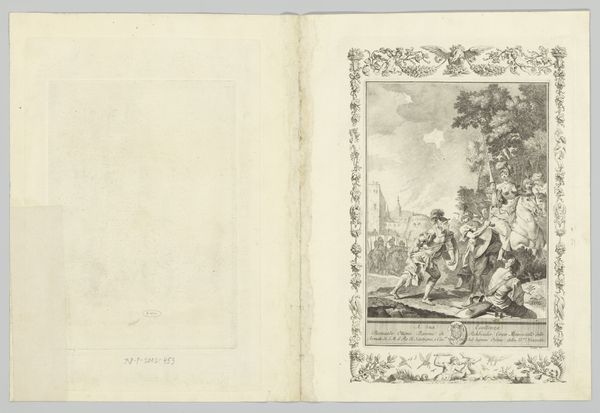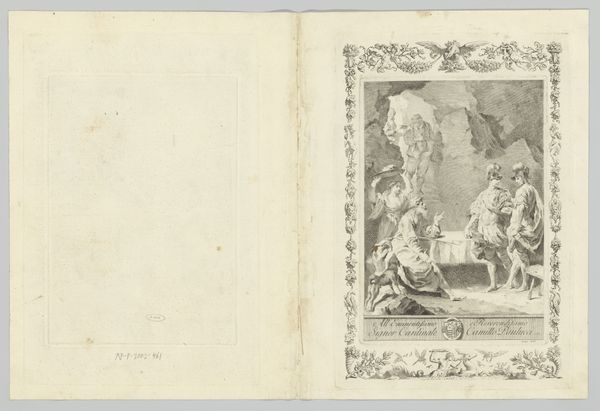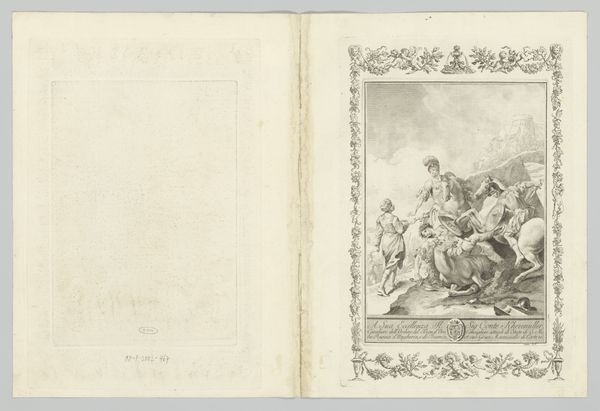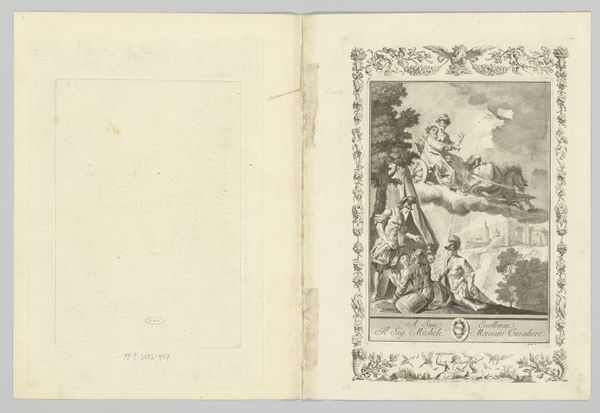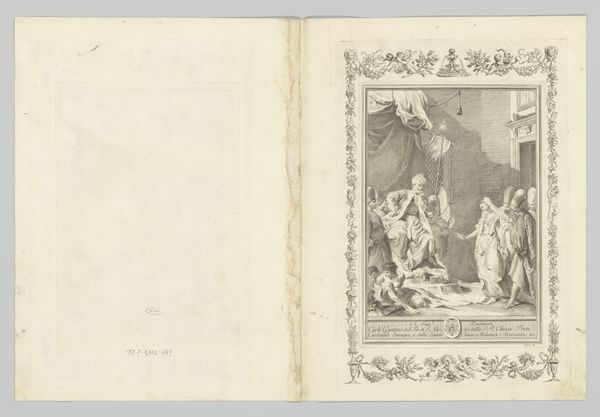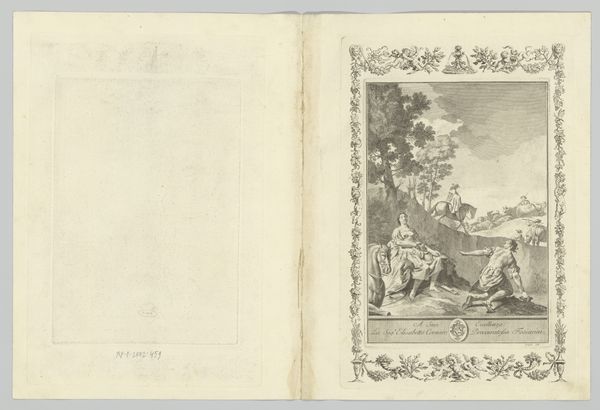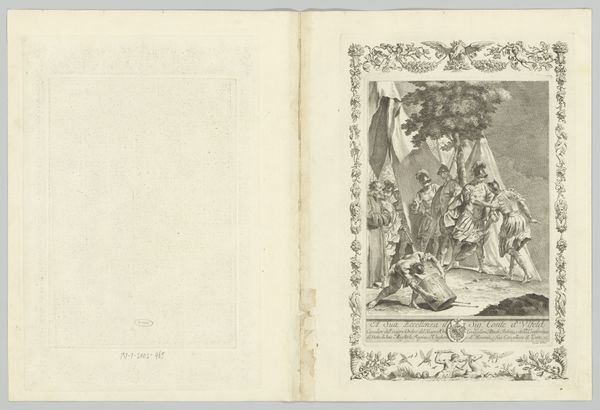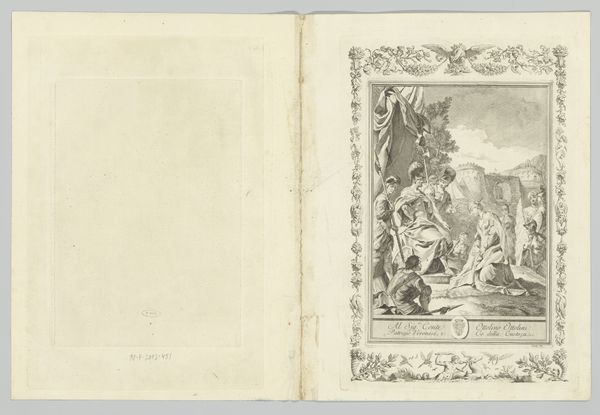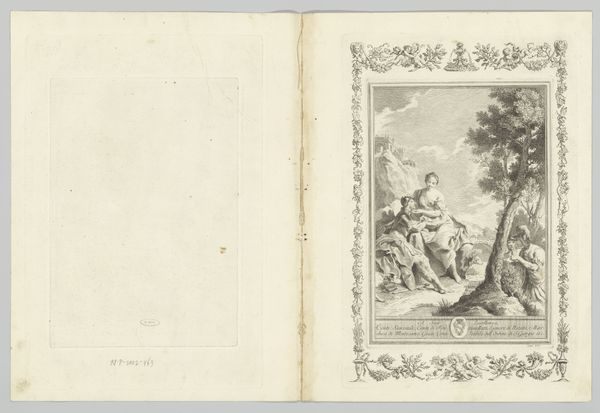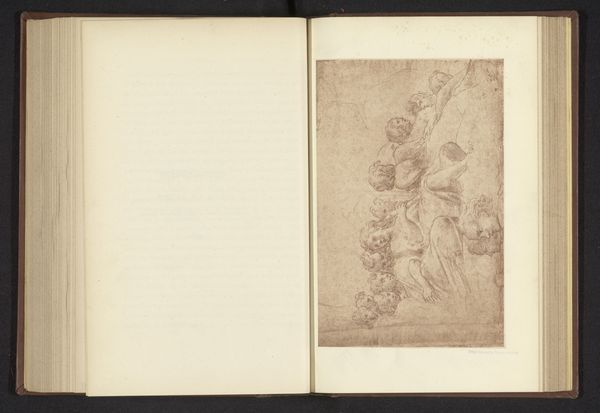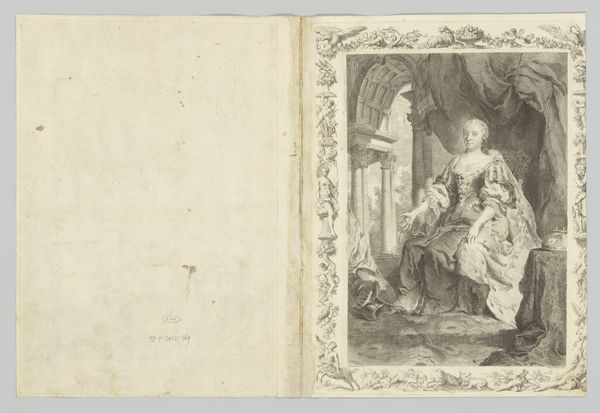
print, engraving
#
allegory
#
baroque
#
ink paper printed
# print
#
history-painting
#
engraving
Dimensions: height 290 mm, width 200 mm, height 381 mm, width 254 mm
Copyright: Rijks Museum: Open Domain
Curator: Welcome. Before us, we have Martin Schedel’s "Scène uit La Gerusalemme Liberata," an engraving from 1745. It depicts a scene from Torquato Tasso's epic poem. Editor: It strikes me as theatrical, like a stage production rendered in miniature. The sharp lines of the engraving, especially around the figures, give it an almost stark quality. How was this even made? Curator: Schedel uses the visual language of the Baroque, drawing on allegory and history painting. Look at the figure of Justice on her throne. Her pose, her garments… it's all carefully designed to project an aura of divinely ordained power. We could dig deeper into how this reflects 18th century ideas about leadership and morality. Editor: Fascinating! But, more crucially, this piece shows an impressive mastery of a skilled trade. Imagine the work that went into this! To etch such detail into a metal plate... then to transfer that image onto paper through the repetitive labor of printing! And notice the use of expensive paper in the 18th century; these materials suggest that the work and printing may have been directed towards elites. Curator: I'd agree. Each character symbolizes an idea, or a group, with gestures that communicate these ideas across class divides, as well as languages and cultures. Engravings like this disseminated imagery far and wide; what cultural ripples would Schedel foresee? Editor: And what does it tell us about access to knowledge in that era? The piece is adorned with floral borders and symbolic ornamentation; how might those decorations function within both high art and print economies? What craft traditions are brought together, or left behind, in creating this scene? Curator: That's a lovely counterpoint. The poem that Schedel responds to explores love, duty, and heroism; these themes find symbolic articulation in how Justice watches as characters plead to her. Even something like that flag acts as a signifier for empire and moral certitude, all compacted in that space. Editor: So we see not just an aesthetic object but also the product of labor and social power, which in turn reinforces those cultural powers, echoing down to today. I’m left contemplating the economics of beauty in that moment and what traces endure in this present moment. Curator: Indeed! What begins as aesthetic appreciation opens doors to understanding our shared symbolic landscape and memory.
Comments
No comments
Be the first to comment and join the conversation on the ultimate creative platform.
